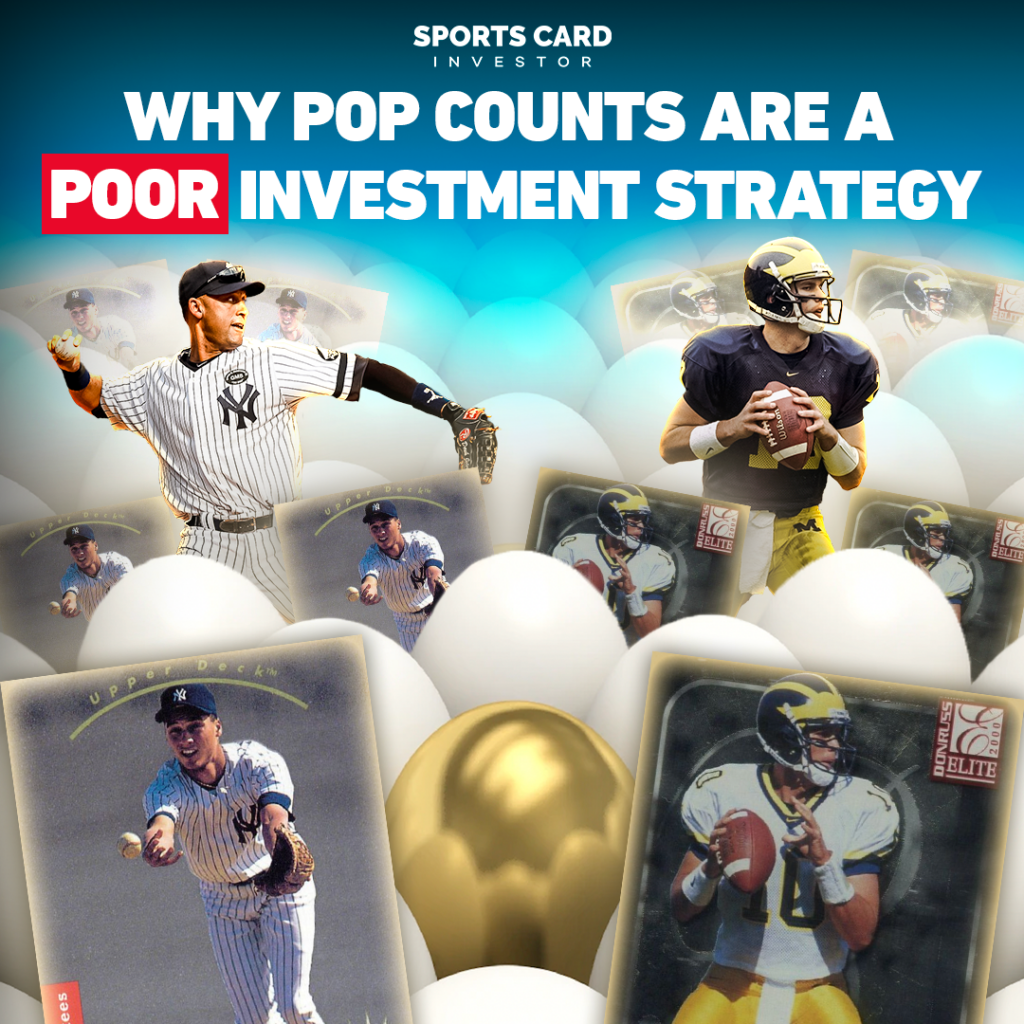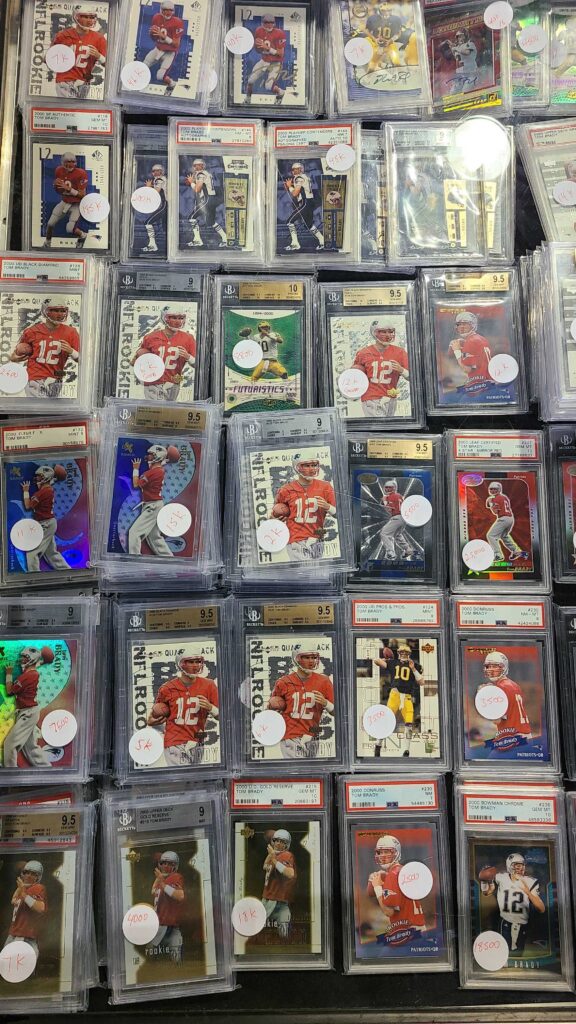
Why Pop Counts Are A Poor Investment Strategy
With the surging sports card hobby market, a lot of people have been trying to pinpoint areas where they can maximize their profits when buying and selling sports cards. Investors are also trying to find specific ways to outsmart their competition, and this has led to the belief that scarcity is one of the overriding factors to valuing sports cards. While a shortage is a smart contributing factor to future card investments, many people rely on pop counts for graded cards as a legitimate premise for indicating a card’s scarcity within the sports card market.
Unfortunately, the concept that pop counts are a reflection of scarcity is a faulty premise and the hobby saw it backfire hard in the year from the boom of 2020 transitioning into 2021.
One of the biggest obstacles in relying on pop counts is that grading itself is reliant on subjectivity across third-party graders, regardless of companies’ insistence of A.I. grading being on the horizon. There have been multiple instances where the same cards have been resubmitted to a single company and they’ve received different grades each time.
Cracked cards have been sent in for grading and have received wildly varying marks, too, in large part because there is no universal grading standardization.
Very recently, videos of Pokémon card submissions have surfaced where the cards were cracked, submitted and they received higher surface scores or better centering numbers the second time around. Both of those categories are, in theory, areas where cards should not be changing, grade-wise.

Another big issue with a dependance on pop counts is the underlying belief of pop count control by grading companies. These agencies are all in the business of authenticating and assigning grades to cards. The more money a card can fetch in a high-profile auction, the more notoriety and positive publicity that grader recoups.
With certain cards, obtaining the highest grade has proven notoriously difficult. An example includes Derek Jeter’s 1993 SP Foil, where there are only 21 PSA 10s out of more than 20,000 that have been submitted. Some of that could simply be due to extra scrutiny because of the actual card quality. But it also behooves a company to limit the number of 10s for such a card because it increases the monetary value for the brand and could influence the number of future submissions. If you think you have a legitimate 10 (and that card is going for almost $400,000), you are more likely to submit it at a higher grading cost. Of course, that company pockets the grading fee whether the card comes back a 7 or a 9.
Pop counts can also be misleading simply from a pure submission standpoint because they’re reliant on people being willing to spend the money to submit cards in the first place. There are a lot of collectors out there who don’t bother grading their cards or see any real purpose in submitting them just to have a random stranger assign a grade which then artificially boosts or detracts the financial value of that card.
Good examples of this are with specific Tom Brady cards, where the pop counts reflect much lower scarcity compared to the actual card’s print run. At PSA, there have been 161 submissions of the 2000 Donruss #230 but the print run was 1,325. His 2000 Donruss Elite #183 has been submitted 192 times with 2,000 printed.
The other danger is trying to rely on pop counts for occasions where a card is believed to be either short-printed or super short-printed without any specific confirmation from the manufacturer. Keeping with the Brady theme, there’s his base 2000 Playoff Contenders #144 autograph. At PSA, there have been 202 submissions of this card. At Beckett, there have been 668. SGC says it has seen 47. Assuming there are no resubmissions or crack outs, a card that people believe to be short-printed due to Brady being a sixth-round selection has at least 917 copies out there. And that total completely ignores the raw copies in existence.
Trimmed cards also impact the pop count. It’s much easier for an altered card to achieve a higher grade because the initial flaws have been taken out, whether it was slightly off-centered or dully colored. It is well known in the hobby that some bad actors alter cards and submit them for grading. Then, rather than catching the culprits, inspectors miss the coloring or trimming and assign legitimate grades to those faulty cards.
This has been such a big issue over the years that the FBI stepped in and investigated specific companies, auction houses and shady individuals. A lot of these doctorers have submitted hundreds, if not thousands, of cards over the years across all sports to various graders. Even high-end hobbyists have been burned by wonky Wayne Gretzky cards and others.
When investing or collecting in sports cards, understand that relying on pop counts from third-party graders is highly flawed for multiple reasons. As we saw with the rookie base card boom for Zion Williamson and the like, people underestimated the scarcity of a card because of its initial submission numbers. As soon as everybody jumped on the bandwagon, the perceived scarcity vanished.
Invest in the card because you love the card itself, not the external criteria that can change at any given time.
Track your collection and maximize your profit with Market Movers, the hobby’s most powerful sports card pricing platform! Learn more here.
Note to readers: If you purchase something through one of our affiliates, we may earn a commission.






